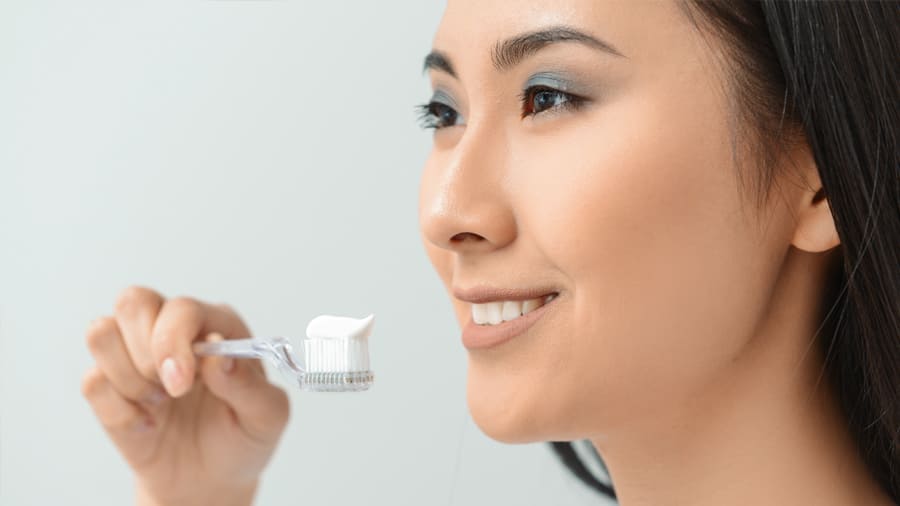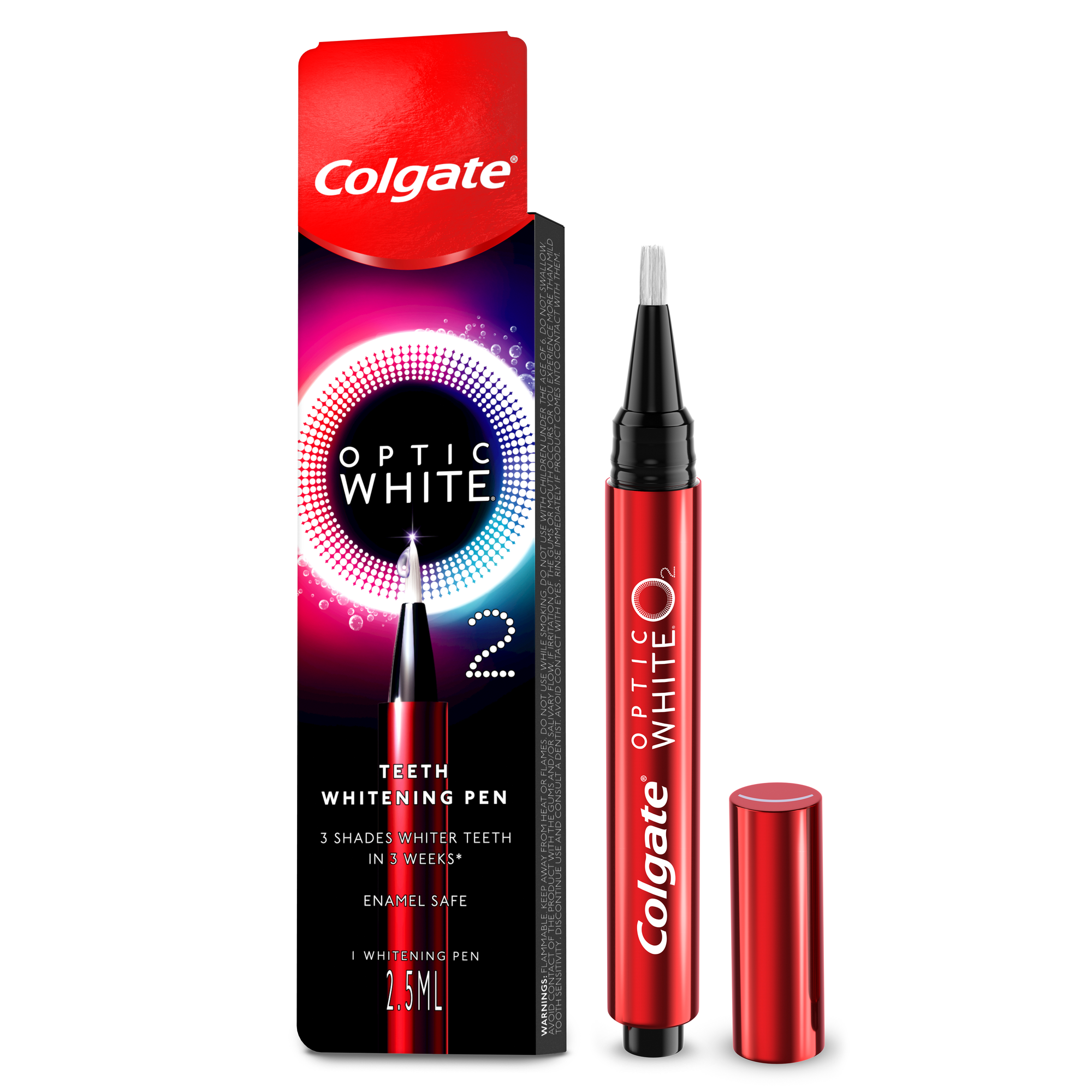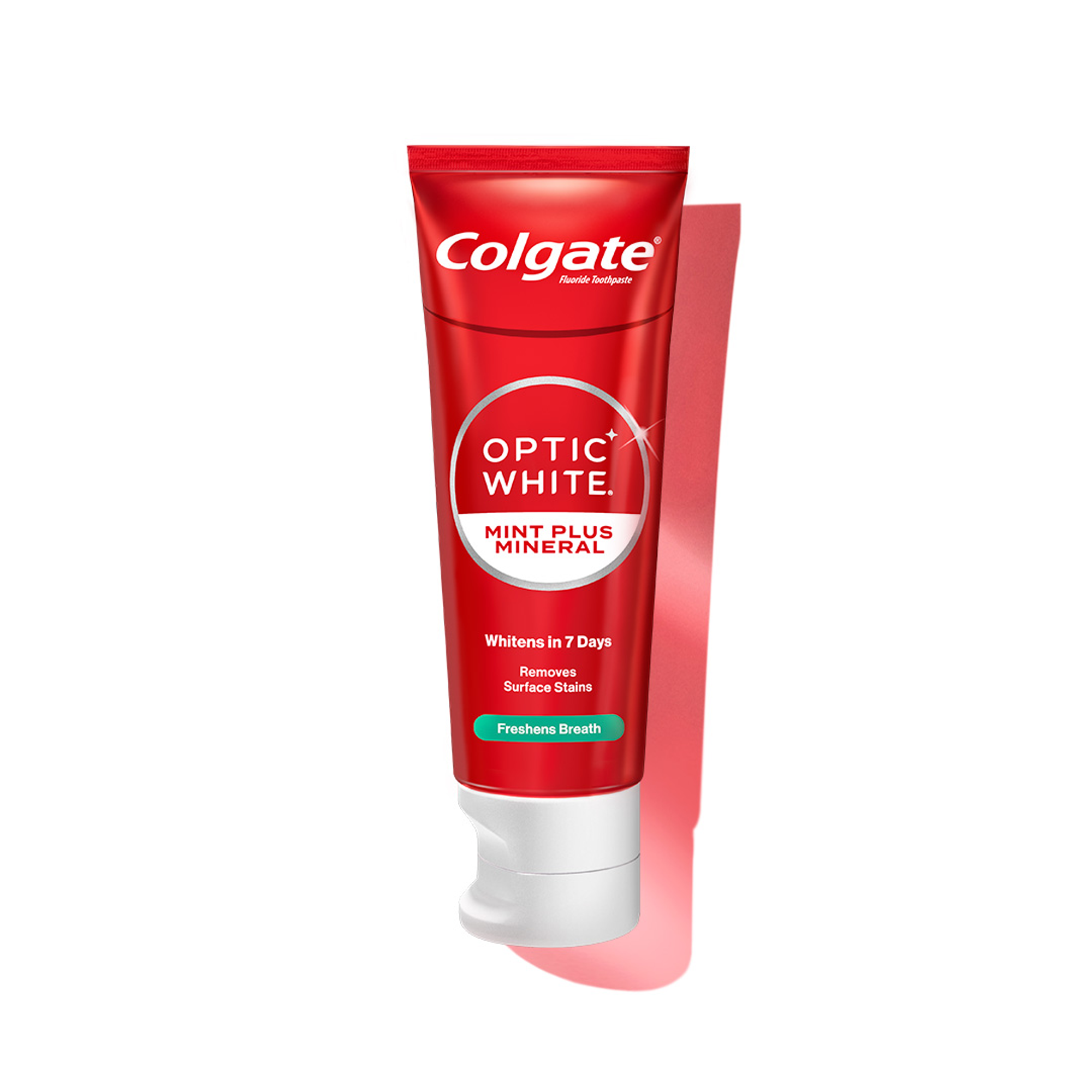Why Teeth Lose Their Whiteness
Before exploring ways to whiten teeth, understanding why teeth lose their brightness is important. Tooth stains and discolouration can happen even with regular brushing. Knowing the causes can help you choose the right solutions for how to whiten teeth safely.
Common reasons why your teeth lose their whiteness include:
Diet and drinks – Coffee, tea, red wine, and dark-coloured foods can stain tooth enamel over time.
Poor oral hygiene – Not brushing and flossing regularly allows plaque buildup that dulls your smile.
Smoking or tobacco use – Nicotine and tar cause yellow or brown stains on teeth.
Ageing – Enamel wears down naturally, revealing the yellowish dentine beneath.
Medications and health conditions – Certain antibiotics, treatments, or illnesses can lead to discolouration.
In short, many factors contribute to staining. But the good news is that there are safe and effective ways to whiten teeth at home once you know the causes.

Use daily for teeth colour-correction
Natural Home Remedies for Teeth Whitening
If you are searching for healthy teeth whitening methods, natural remedies can be a safe starting point. Instead of harsh chemicals, you can explore simple solutions on how to whiten teeth naturally. These techniques are easy to try and can complement your regular oral care routine.
While they may not offer instant results like professional treatments, they can support gradual teeth whitening at home safely. However, the results are often temporary. If you notice any irritation or tooth sensitivity, it is best to stop and consult a dental professional for guidance.
1. Baking Soda
Baking soda is commonly found in many kitchens and is often used in home remedies to make teeth appear whiter. It is inexpensive, easy to use, and one of the most popular options for those who try to bleach teeth at home.
Many people mix baking soda with a few drops of water to create a paste, then brush with it for a couple of minutes before rinsing. Some even let it sit briefly on the teeth before washing it off. However, it is important to use it with caution and get professional help if required.
2. Hydrogen Peroxide
Hydrogen peroxide is widely known for its bleaching effect and is sometimes used in home remedies for whitening. Many people explore how to whiten teeth with hydrogen peroxide because it can help lighten surface stains and reduce plaque buildup over time.
A diluted solution (often mixed with equal parts water) is commonly used for rinsing or brushing. However, frequent or improper use may cause side effects such as tooth sensitivity or irritation of the gums.
3. Oil Pulling
Oil pulling is an ancient practice that some people use as part of their routine for teeth whitening at home. It involves the use of oils like coconut oil, which is believed to help reduce bacteria, freshen breath, and support gum health.
As one of the traditional teeth whitening techniques, the method typically includes a long swish of oil in the mouth (often between 5–20 minutes) before spitting it out. While it may not dramatically whiten teeth, many consider it a natural way to support overall oral hygiene.
4. Fruits & Vegetables
Certain crunchy fruits and vegetables are often linked with easy teeth whitening at home. Foods like apples, carrots, and celery can gently scrub the teeth as you chew. This could help in reducing surface stains and increasing saliva flow, which naturally supports a cleaner mouth.
Some fruits, such as strawberries and pineapples, are also popularly associated with natural whitening effects because of their enzymes and mild acidity. While these foods may not replace professional treatments, including them in your diet can complement regular oral care.
5. Activated Charcoal
Activated charcoal is often mentioned as one of the trending methods for getting teeth whiter at home. Its porous texture may help absorb surface stains, making it appear like a quick and simple option for those searching for the best way to whiten teeth naturally.
Many people use it by dipping a wet toothbrush into charcoal powder and brushing gently for a couple of minutes before rinsing thoroughly. While it can make teeth look brighter temporarily, frequent use may wear down enamel, so it is usually used in moderation. Additionally, charcoal toothpaste is also available right now in the market, offering the same benefits.
6. Lemon & Orange Peels
Citrus fruits like lemon and orange peels are sometimes used in natural teeth whitening methods. The acids in these peels may help break down surface stains, giving a temporary whitening effect.
Some people rub the inside of the peel directly on their teeth or mix the dried, powdered peel with toothpaste. However, since citrus acids can also erode enamel, this method is usually considered more of an occasional remedy rather than a long-term solution.
7. Apple Cider Vinegar
Apple cider vinegar is sometimes used as a natural option for those wondering how to get white teeth. Its acidic nature may help break down stains on the tooth surface, making teeth appear a little whiter over time.
Many people dilute it with water and use it as a rinse before brushing. Since frequent use can weaken enamel, this approach is often limited to occasional use rather than part of a daily routine. While it is used by many for achieving whiter teeth, this home remedy is not scientifically proven.
Over-the-Counter (OTC) Teeth Whitening Options
When exploring teeth whitening at home, many people turn to teeth whitening products that are widely available in stores. These options are easy to use, relatively affordable, and can offer noticeable improvements in tooth colour compared to natural remedies. While results are not as strong as in-office whitening, OTC products can still support a gradual whitening process.
1. Colgate Active Oxygen Whitening Technology
When it comes to the best safe teeth whitening options available over the counter, Colgate Optic White O2 Whitening Toothpaste stands out. Its pioneering Active Oxygen whitening technology is unlike most whitening toothpastes, which just whiten the surface of the teeth. Its Active Oxygen formula gets absorbed into the enamel to whiten from the inside out, giving whiter teeth in just 3 days*.
You can experience a unique warming sensation as you brush and feel the power of oxygenated whitening. Colgate’s Optic White O2 Whitening Toothpaste offers a safe, effective way to achieve visibly whiter teeth while still protecting your enamel and promoting daily oral health.
2. Whitening Toothpaste
Whitening toothpaste is one of the most widely used teeth whitening treatments for everyday oral care. These toothpastes usually contain mild abrasives and gentle polishing agents that help scrub away surface stains caused by coffee, tea, wine, or smoking. Some also include stain-fighting ingredients like hydrogen peroxide or baking soda for extra whitening support.
While they do not change the natural colour of your teeth, whitening toothpastes can make your smile appear brighter with consistent use. They also often provide added oral health benefits, such as fluoride protection against cavities, making them a practical choice for daily use. However, results are gradual, and they work best as a maintenance option rather than a quick whitening solution.
3. Whitening Mouthwash
Whitening mouthwashes are an easy addition to your teeth whitening at home routine. They often contain whitening ingredients like hydrogen peroxide that help reduce surface stains while freshening breath. Since they reach areas that brushing and flossing might miss, they can support overall oral hygiene along with a mild whitening effect.
However, whitening mouthwash alone usually provides only subtle results. It works best when combined with other teeth whitening products, such as whitening toothpaste or strips. With regular use, they can help maintain a brighter smile and prevent new stains from setting in, making them a convenient supplement to your daily dental care.
4. Whitening Strips and Pens
Whitening strips and pens are among the most popular options for those wondering how to whiten your teeth at home in one day. Strips come coated with a gentle bleaching agent that adheres to the surface of your teeth, helping to lighten stains with consistent use. Pens, on the other hand, allow quick and precise application of whitening gel, making them a portable option for touch-ups.
While they can deliver noticeable results quickly, some users with sensitive teeth may experience mild discomfort or irritation. For best outcomes, it is important to use these products as directed and combine them with regular brushing and flossing. Over time, they can effectively enhance your smile while fitting easily into a daily routine.
5. Whitening Gels & Kits
Whitening gels and kits are often considered the best way to whiten teeth at home for those seeking stronger results. These kits typically include a teeth whitening gel containing a bleaching agent, along with whitening trays that help keep the gel in close contact with the teeth. By covering more surface area, they can target deeper stains that everyday products might not reach.
Many people prefer teeth whitening kits because they provide results similar to professional treatments, but at a lower cost. However, since the bleaching agents can be stronger, overuse may cause sensitivity or irritation. Using the kits as instructed ensures effective whitening while maintaining enamel safety.
How to Maintain White Teeth at Home
Whitening treatments can brighten your smile, but keeping your teeth white requires consistent care. Proper oral hygiene and smart lifestyle choices go a long way in preventing stains and protecting enamel. Here are some effective ways to maintain your bright smile at home:
Brush and floss regularly: Use a fluoride toothpaste and brush at least twice a day, followed by flossing to remove plaque and food particles.
Choose the right toothbrush: Use a soft-bristled toothbrush to effectively clean your teeth. An electric toothbrush can also be effective in removing plaque.
Rinse after meals: Swishing water or a fluoride mouthwash after eating can reduce staining from foods and drinks.
Limit stain-causing foods and drinks: Coffee, tea, red wine, and dark sauces are common culprits. If consumed, rinse or brush soon after.
Avoid smoking and tobacco: These not only cause stubborn stains but also increase the risk of tooth decay, gum disease and other health issues.
Be mindful of dental work: Whitening will not change the colour of fillings, crowns, or veneers, so consult your dentist for the best approach.
Do not over-whiten: Stick to the recommended frequency on your whitening product or consult a dentist. Overuse can damage enamel and cause sensitivity.
Professional care: Regular dental check-ups and cleanings help maintain oral health and support long-term whitening results.
If you are wondering how often to whiten teeth, rather than the frequency, maintaining the results is crucial. Many also ask, “Can I brush my teeth after whitening?” Yes, gentle brushing helps protect the enamel and maintain the results. With the right brushing habits, diet, and routine dental visits, you can enjoy a brighter smile for longer without damaging your teeth or gums.Teeth whitening at home has become a popular way to achieve a brighter smile without spending too much. From simple remedies to the best at home teeth whitening products, there are plenty of safe and effective choices. The right whitening agent can lighten stains, but long-lasting results depend on good oral hygiene. For stubborn discolouration, professional teeth whitening may still be the best option. With the right care, you can enjoy a healthy and confident smile every day.
*Use as directed, 1 shade whiter in 3 days. Results may vary.
Frequently Asked Questions
How can I whiten my teeth fast at home?
Many people use whitening strips, pens, or whitening toothpaste for quick results. Baking soda or activated charcoal can also help remove surface stains temporarily. However, while trying home remedies, it is important to use them with caution.What is the best home whitening for teeth?
Whitening toothpastes with Active Oxygen technology, gels and kits with trays are often considered the most effective at-home options. They use safe whitening agents that work more deeply than other home remedies.Can yellow teeth get white again?
Yes, yellow teeth can become white again with consistent care. Home remedies, whitening products, and professional treatments all help remove stains and restore your natural tooth colour.How to get rid of yellow teeth overnight?
Overnight changes are limited, but whitening strips or pens can give a quick boost. For lasting results, regular whitening and good oral hygiene are essential.














